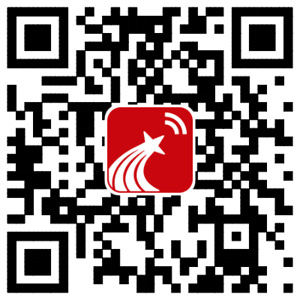限定内容
主题
- 15,390 篇 发展史
- 10,392 篇 含水量
- 5,821 篇 直径
- 5,225 篇 干眼症
- 3,483 篇 含水率
- 3,247 篇 干眼
- 2,963 篇 聚甲基丙烯酸甲酯
- 1,822 篇 中国
- 1,269 篇 植被覆盖度
- 1,207 篇 phylogeny
- 1,040 篇 圆锥角膜
- 935 篇 土壤含水量
- 896 篇 人工泪液
- 772 篇 白内障
- 731 篇 屈光参差
- 614 篇 有机玻璃
- 596 篇 聚丙烯酸酯
- 587 篇 角膜新生血管
- 520 篇 覆盖度
- 477 篇 玻璃酸钠滴眼液
机构
- 221 篇 中国科学院大学
- 217 篇 浙江大学
- 190 篇 成都中医药大学
- 188 篇 华中科技大学
- 184 篇 长安大学
- 163 篇 中山大学
- 145 篇 湖南中医药大学第...
- 141 篇 大连理工大学
- 130 篇 吉林大学
- 127 篇 北京林业大学
- 119 篇 东南大学
- 112 篇 福建师范大学
- 112 篇 天津大学
- 112 篇 西北农林科技大学
- 110 篇 北京大学
- 105 篇 首都医科大学附属...
- 104 篇 清华大学
- 102 篇 四川大学
- 100 篇 华南理工大学
- 95 篇 厦门大学
文献订阅
- 洛克希德·马丁公司百年发展史研究
- 中国空间技术研究院
-
来源
 维普期刊数据库
维普期刊数据库
 万方期刊
万方期刊
 中国学术期刊网络出版...
详细信息
中国学术期刊网络出版...
详细信息
- 超大直径越江隧道河段极端洪潮冲刷深度预测
- 中铁第四勘察设计院集团有限公司 湖北武汉430063河海大学水利水电学院 江苏南京210098中国科学院武汉岩土力学研究所 湖北武汉430071
-
来源
 维普期刊数据库
维普期刊数据库
 万方期刊
万方期刊
 中国学术期刊网络出版...
详细信息
中国学术期刊网络出版...
详细信息
- 2000—2023年湖南省林地植被覆盖度的时空变化特征及影响因素
- 湘西土家族苗族自治州林业科学研究所 湖南吉首416000湘西土家族苗族自治州森林资源监测中心 湖南吉首416000
-
来源
 维普期刊数据库
维普期刊数据库
 万方期刊
详细信息
万方期刊
详细信息
- 基于频域扫描的表层土壤含水量检测算法
- 中国石油大学(华东)海洋与空间信息学院 山东青岛266580青岛理工大学理学院 山东青岛266525
-
来源
 维普期刊数据库
维普期刊数据库
 万方期刊
万方期刊
 中国学术期刊网络出版...
详细信息
中国学术期刊网络出版...
详细信息
- 强脉冲光联合睑板腺按摩治疗睑板腺功能障碍性干眼患者的效果
- 云霄县医院 福建漳州363400
-
来源
 维普期刊数据库
维普期刊数据库
 中国学术期刊网络出版...
详细信息
中国学术期刊网络出版...
详细信息
- Identification of Grassland Vegetation Coverage and Height Based on Vegetation Index and HSV Space
- School of Mechanical Engineering Hangzhou Dianzi UniversityHangzhou 310018ChinaSchool of Technology Beijing Forestry UniversityBeijing 100083ChinaSchool of Computer Science Hangzhou Dianzi UniversityHangzhou 310018China
-
来源
 维普期刊数据库
维普期刊数据库
 中国学术期刊网络出版...
详细信息
中国学术期刊网络出版...
详细信息
- 针刺治疗肝肾阴虚型干眼症疗效观察及对眼动脉血流动力学的影响
- 丽水市中心医院眼科 浙江丽水323000
-
来源
 维普期刊数据库
维普期刊数据库
 中国学术期刊网络出版...
中国学术期刊网络出版...
 万方期刊
详细信息
万方期刊
详细信息
- 眼睛“缺水”,滴眼药水管用吗?
- 北京大学第三医院眼科
-
来源
 维普期刊数据库
详细信息
维普期刊数据库
详细信息
- 三明治结构间位芳纶复合纸的制备及其性能研究
- 国网河南省电力公司超高压公司 郑州450000河南工程学院材料工程学院 郑州450007河南省纤维制备与改性工程技术研究中心 郑州450007
-
来源
 维普期刊数据库
维普期刊数据库
 万方期刊
万方期刊
 中国学术期刊网络出版...
详细信息
中国学术期刊网络出版...
详细信息
- 基于GNSS定位技术的消防机器人转弯直径测量方法探讨
- 应急管理部上海消防研究所 上海200032武汉朗维科技有限公司 湖北武汉430010
-
来源
 维普期刊数据库
维普期刊数据库
 中国学术期刊网络出版...
中国学术期刊网络出版...
 万方期刊
详细信息
万方期刊
详细信息

